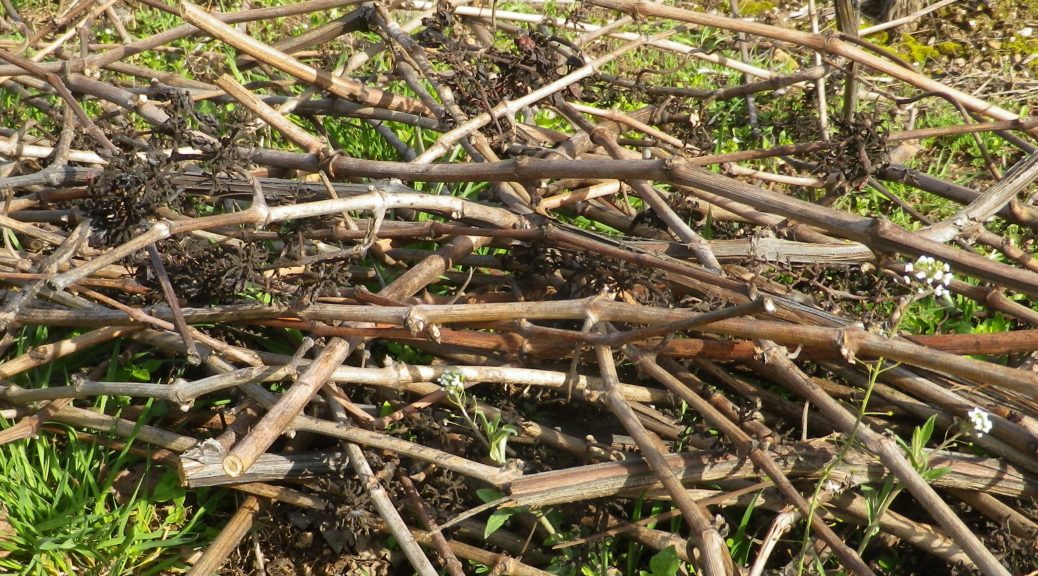What I Learned
Germany’s Baden wine region contains a district on the shores of Lake Constance, or Bodensee, as it is called in German. The lake itself has two distinct parts: the Bodensee, and the Untersee. Both have vineyards which fall under Grosslage Sonnenufer. This post comments on the Kirchhalde slope by Uhldingen, on the Bodensee itself.
The lake and the northern shoreline’s southern exposure to sun help to warm this area, making it a garden spot for Germany. Vineyards are tucked among the villages and religious foundations, along with fruit trees and fields of vegetables, grains and flowers. In this district, vineyards grow primarily in gravelly, moraine clay soils. The Kirchhalde slope, with a nice south, south-westerly exposure, is fairly pronounced, but overall, the elevation is less than 500 meters.
Kloster (Cloister) Birnau rises above the vines on the Kirchhalde slope. The church began life as a modest pilgrimage site in the ninth century, and later became attached to the Cistercian abbey in nearby Salem. Today, Salem’s abbey, referred to as Schloss Salem, is part of the Weingut (winery) Markgraf von Baden, which has vineyards in the Sonnenufer area, as well as vineyards in the Ortenau, in the Rhine River valley.
The history of the Kirchhalde vineyard is sadly more obscure than the cloister’s, although presumably the monks maintained vines here to make communion wine. This would have included a red varietal, quite possibly Pinot Noir. The two most commonly cultivated varietals in this region currently are the red Spaetburgunder (Pinot Noir) and the white Mueller-Thurgau. The conditions cited above provide ideal growing conditions for these grapes varietals.
Pinot Noir is a famously Burgundian varietal, hence the German name. Mueller Thurgau is a varietal developed by a Swiss man from the Swiss Canton of Thurgau, just across the lake, a little over 100 years ago. It is well-established now in the Lake Constance region. (Click here for more on Mueller Thurgau.)
What I Tasted
2017 Cuvee Blanc 1264, Deutsche Qualitaetswein, Trocken, Weingut Kress (Ueberlingen): A dry white wine blend (Weissburgunder, Mueller-Thurgau), with very light gold color (almost clear); red apple, peach and apricot nose, with peach and apricot flavors; slightly tart finish with medium acidity.
2016 Grauburgunder, Bodensee, VDP Ortswein, Qualitaetswein, Trocken, Markgraf von Baden: A dry white wine with medium plus gold color; floral and vanilla nose, with vanilla, pear, green apple and toasted nut flavors; medium acidity with smooth finish.
2015 Pinot Noir, Trocken, VDP Gutswein, Markgraf von Baden: A dry red wine with medium ruby red color; red berry nose, and licorice, and red berry flavors; mild tannins, with a slightly acidic finish.
2015 Mueller-Thurgau, Bodensee Birnauer, Trocken, VDP Ortswein, Deutsche Qualitaetswein, Markgraf von Baden: A dry white wine with medium minus gold color; peach, honeydew melon, chalk minerality; green apple vanilla, and peach; high minus acidity with a tart finish.
2012 Grauburgunder, Bodensee Birnauer, Trocken, VDP Ortswein, Deutsche Qualitaetswein, Markgraf von Baden: A dry white wine with medium gold color; mild nose of green apples, notes of vanilla; green apple, slight pear and vanilla flavors; medium acidity, more-full bodied than most similar Grauburgunders.
